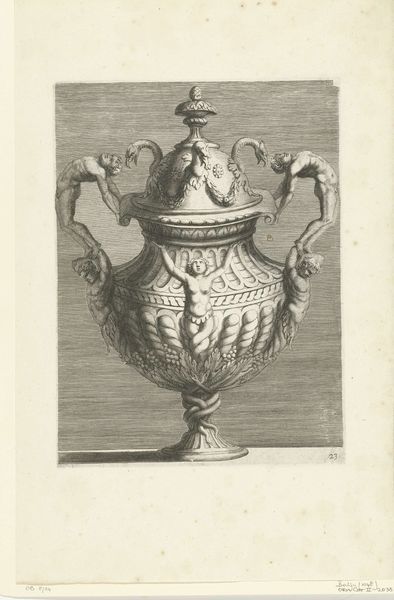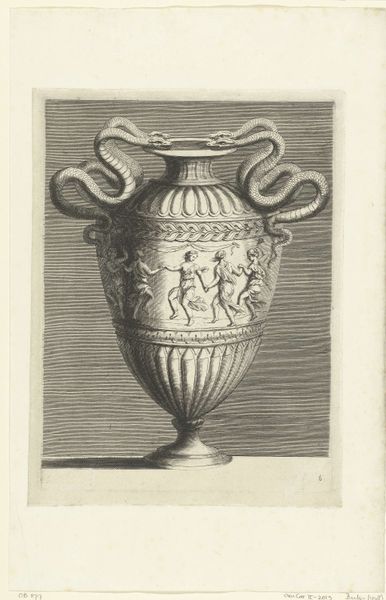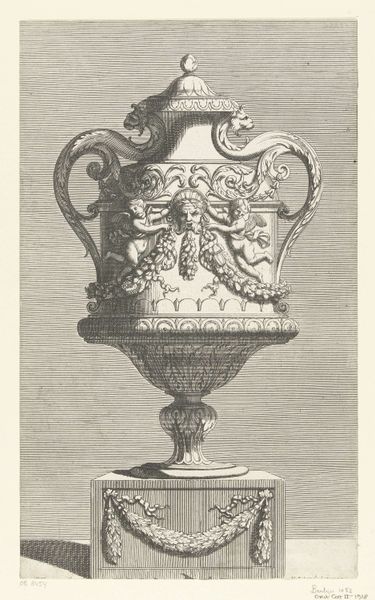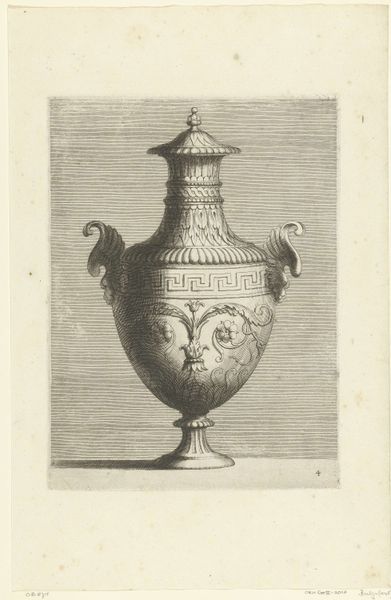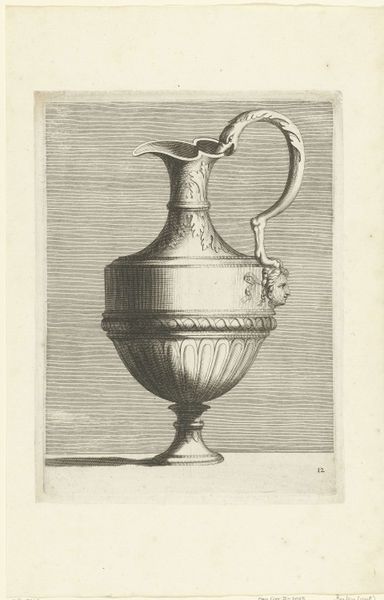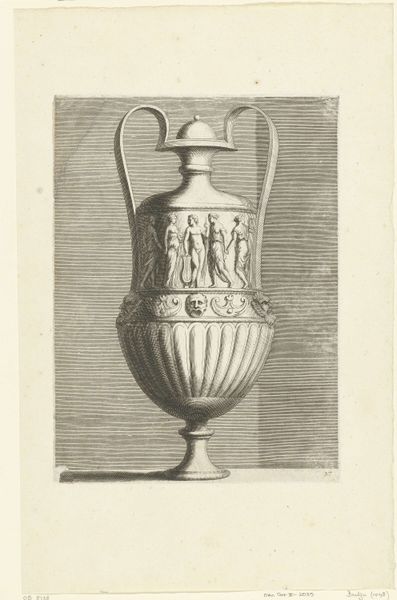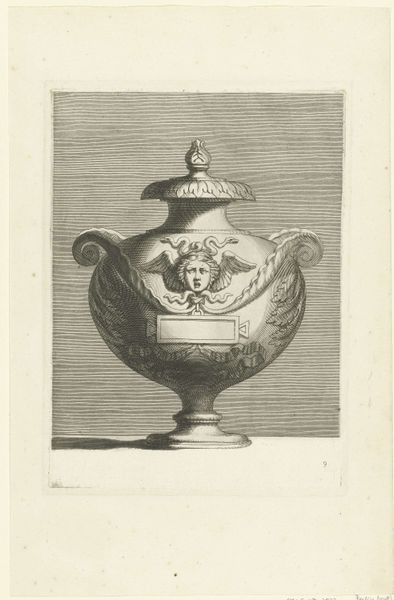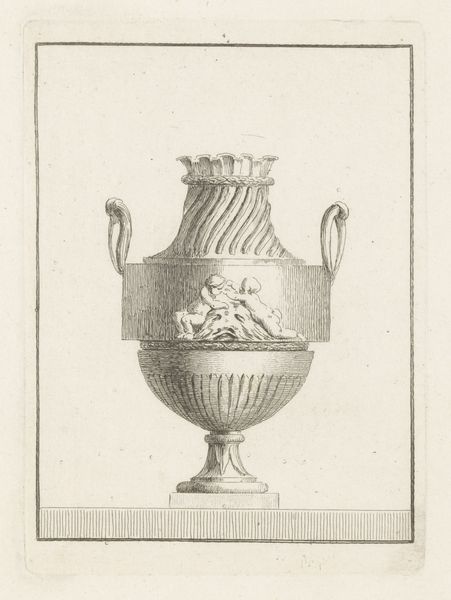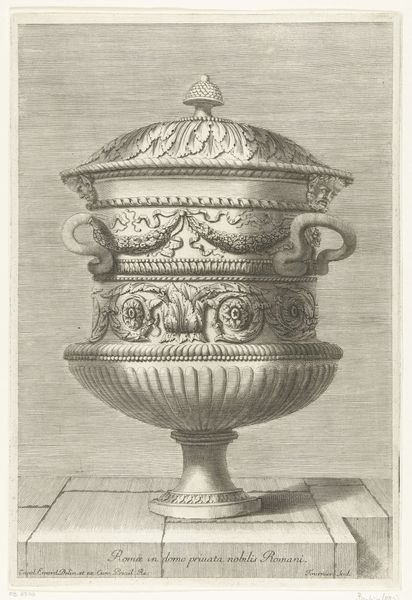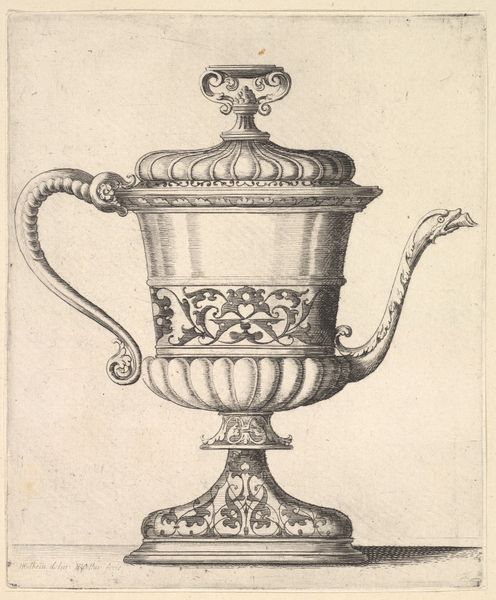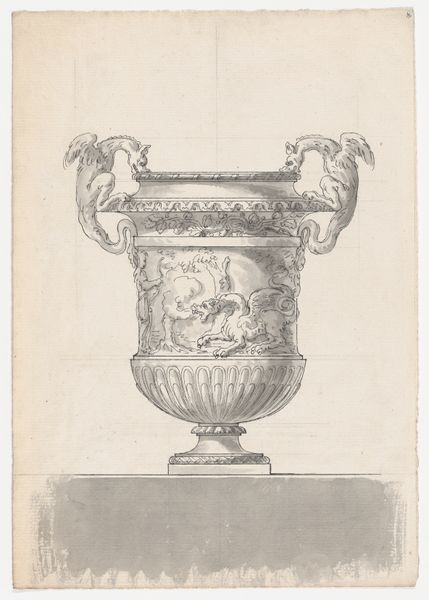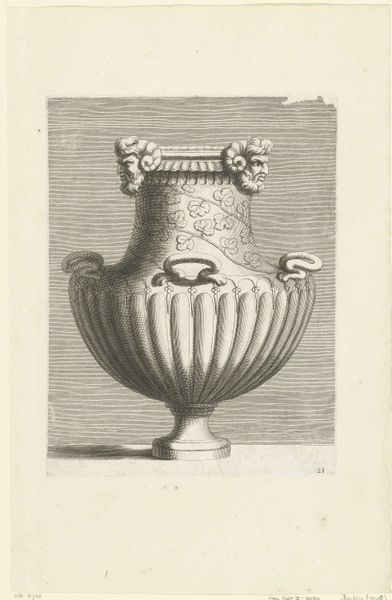
print, metal, engraving
#
baroque
#
dutch-golden-age
# print
#
metal
#
engraving
Dimensions: height 273 mm, width 202 mm
Copyright: Rijks Museum: Open Domain
Curator: Looking at this image, the most immediate impression for me is one of formality. It feels very consciously arranged, perhaps even severe in its detailed rigidity. What do you think? Editor: That's interesting. This print captures a lidded pitcher, known as a "Schenkkan met deksel" in Dutch, dating back to 1667. It’s an engraving done in metal, by the French designer Françoise Bouzonnet. Looking closely, the handle shaped like a serpent coils upward, quite playfully contradicting that severe feel. Curator: Yes, I see it now. And there's a lot more life bubbling beneath the surface, isn't there? All those figures depicted around the belly of the pitcher; what scenes do you make of them? It appears there's quite a bit of dynamic action, something quite emotional seems to be conveyed with all the tension and dramatic gesturing. Editor: Well, such vessels weren’t just utilitarian; they conveyed status and cultivated an engagement with historical or mythological narratives. The figures hark back to antiquity and align with a wider Baroque trend in decorative arts towards allegorical ornamentation, recalling tales of gods, heroes, and elevated rulers. It speaks of wealth and refinement, showcasing access to the past as a way to bolster prestige. The very design blends pagan symbols like the serpentine handle, hinting at the cunning and dangerous power that shapes political ambitions of the era. Curator: So it’s not only about personal identity but social maneuvering then, projecting an image of power through appropriated history. That connects with some theories around social imitation, with people constantly seeking to perform the expected attributes of their selected cohort or their aspirational social standing. I suppose such cultural markers were not so dissimilar in function to a status-display object or practice from our own contemporary moment. The pitcher and print may serve as more than mere artifact; these forms act as both the reflection of and the aspiration towards ideals of civility and dominion. Editor: Indeed, visual artifacts are frequently deployed as the carriers of loaded significance; perhaps objects as witnesses might speak louder about social practices and customs than textual reports could ever attest. In conclusion, what initially seemed just a decorative object unfolds to offer significant testimony about that age's artistic idioms and social conduct. Curator: Exactly. It seems beneath every surface, there lies something of value waiting for keen eyes to uncover.
Comments
No comments
Be the first to comment and join the conversation on the ultimate creative platform.
